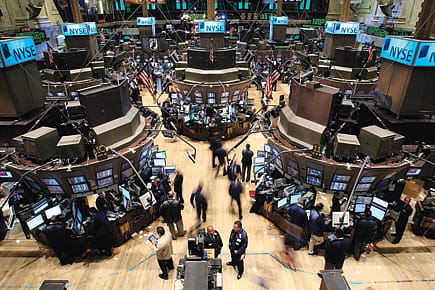Sensex@75000

SENSEX, THE BOMBAY Stock Exchange's index, touched 75000 this week and it is not a given that it will remain there. It could just as easily slide backwards. That is just the way the stock market moves. Lows follow highs and any trigger somewhere else in the world can lead to a crash. However, the long-term trend is clear. The Sensex is nothing more than a basket of the 30 top companies in India, except that it is also a revolving door. Those in the basket that do poorly are evicted from the index and another takes its place. Therefore, the index will always represent what the best of Indian business has on offer. And that then is a direct correlation of India's economic progress itself because as a country becomes wealthier, businesses thrive by providing more goods and services to customers who are now able to pay more.
The journey to 75000 has been a long one. The Sensex came into being in 1986 and touched 1000 in 1990. Then liberalisation happened and soon the economy took off. Only seven companies, which were part of the Sensex when it was first launched, continue to remain there. Reliance is one of them and is currently the largest behemoth in it today. Some of the other originals, FMCG companies like Nestlé and Hindustan Unilever, have also managed to pass the test of entropy. Others have faded into obsolescence. Like Hindustan Motors, whose Ambassador cars used to be ubiquitous on Indian roads pre-liberalisation. Its market capitalisation is now just a little over ₹400 crore. No serious investor would buy its stocks. Instead, in the Sensex, today you have Maruti as an automaker and its market capitalisation is around ₹4 lakh crore, a thousand times that of Hindustan Motors. Maruti itself now faces the challenge of the electric vehicle revolution and, unless it reinvents itself, it too will find it difficult to remain in the index eventually. The story of the Sensex is also the story of companies that managed to be at the right place at the right time like the information technology majors Infosys and Tata Consultancy Services. Entrepreneurs who saw the future and capitalised on it clawed their way to the top and into the Sensex, but remaining there is just as difficult because of all the other entrepreneurs emerging as competition.
Lost: The Unstoppable Decline of Congress
05 Dec 2025 - Vol 04 | Issue 50
Serial defeats | Leadership in denial | Power struggles
The milestone of 75000 is something of an illusion. Because the higher that number goes, the easier it becomes to reach the next big number. It is almost certain that not too far into the future, the Sensex will touch one lakh and it will seem an incredible moment. In percentage terms, it is not that big a leap. Going from 75000 to 100000 is a 33 per cent increase. Imagine then how enormous would have been that leap tenfold from 1000 to 10000. That is why from 1990, it took 16 years to happen. In the Sensex, the rise in the last 10000 points, from 65000 to 75000, took just one year, a blink in relative terms.
